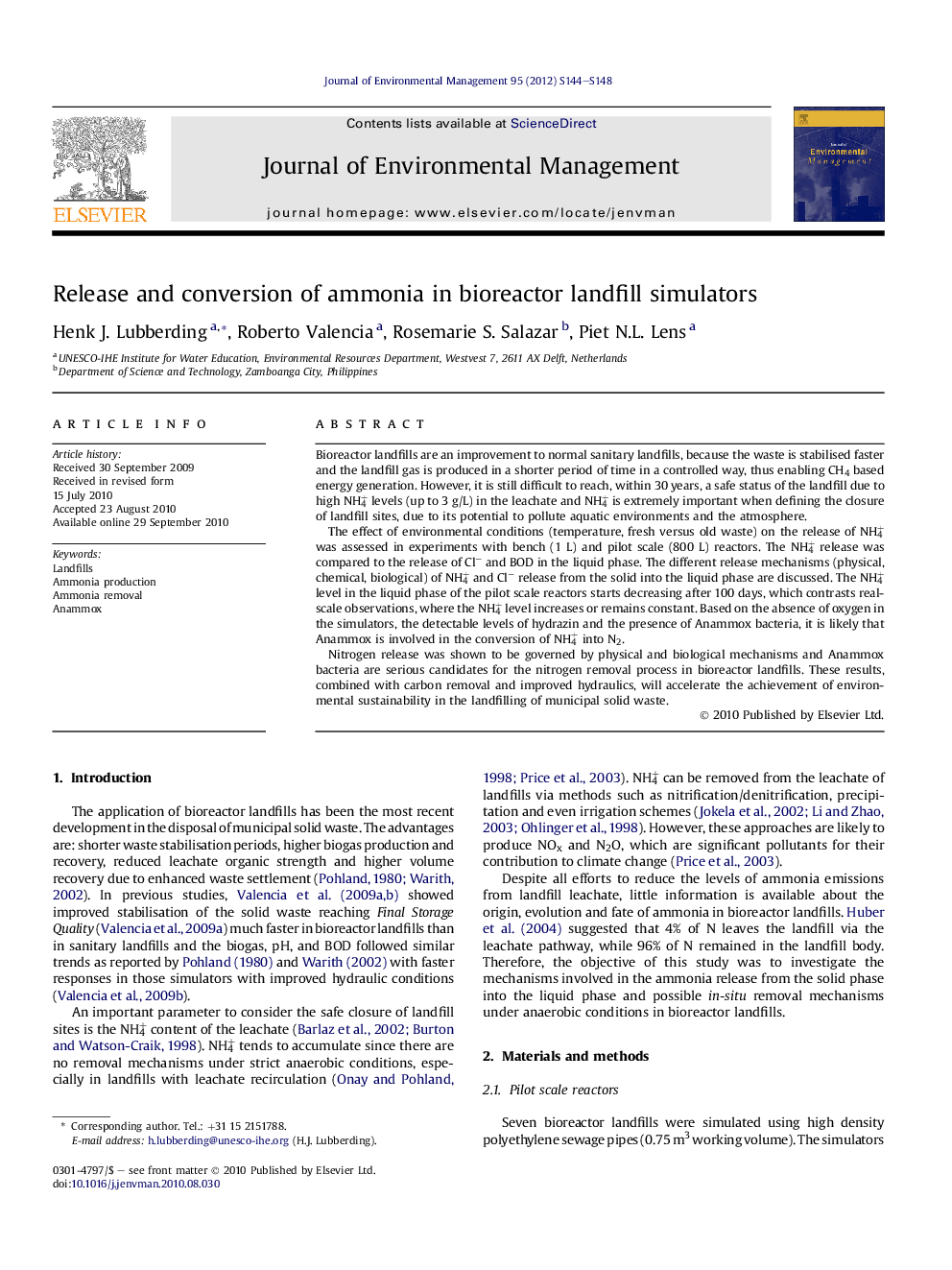| Article ID | Journal | Published Year | Pages | File Type |
|---|---|---|---|---|
| 1057043 | Journal of Environmental Management | 2012 | 5 Pages |
Bioreactor landfills are an improvement to normal sanitary landfills, because the waste is stabilised faster and the landfill gas is produced in a shorter period of time in a controlled way, thus enabling CH4 based energy generation. However, it is still difficult to reach, within 30 years, a safe status of the landfill due to high NH4+ levels (up to 3 g/L) in the leachate and NH4+ is extremely important when defining the closure of landfill sites, due to its potential to pollute aquatic environments and the atmosphere.The effect of environmental conditions (temperature, fresh versus old waste) on the release of NH4+ was assessed in experiments with bench (1 L) and pilot scale (800 L) reactors. The NH4+ release was compared to the release of Cl− and BOD in the liquid phase. The different release mechanisms (physical, chemical, biological) of NH4+ and Cl− release from the solid into the liquid phase are discussed. The NH4+ level in the liquid phase of the pilot scale reactors starts decreasing after 100 days, which contrasts real-scale observations, where the NH4+ level increases or remains constant. Based on the absence of oxygen in the simulators, the detectable levels of hydrazin and the presence of Anammox bacteria, it is likely that Anammox is involved in the conversion of NH4+ into N2.Nitrogen release was shown to be governed by physical and biological mechanisms and Anammox bacteria are serious candidates for the nitrogen removal process in bioreactor landfills. These results, combined with carbon removal and improved hydraulics, will accelerate the achievement of environmental sustainability in the landfilling of municipal solid waste.
